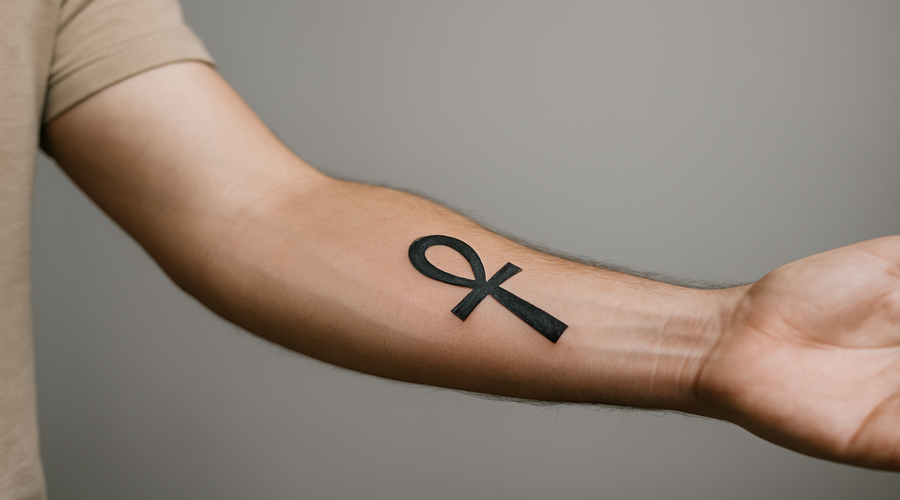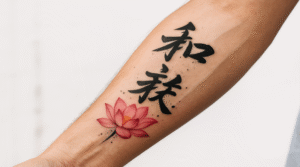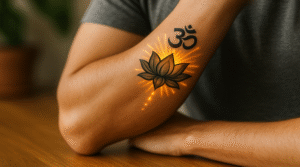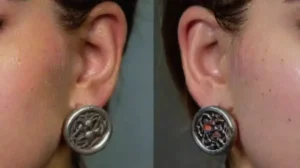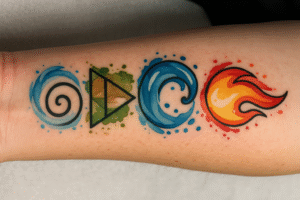The ankh is one of the most recognizable symbols from ancient Egypt, representing life and immortality. Its distinctive loop at the top combined with the cross shape has captivated many throughout history. Today, ankh tattoos are popular among individuals seeking to express their connection to spirituality and enduring strength.
Throughout the centuries, the ankh has transcended its original cultural context, becoming a universal emblem of hope and resilience. Many people choose to ink this symbol on their skin as a reminder of their journey through life and the promise of an everlasting existence. Its aesthetic appeal and profound meaning continue to inspire tattoo enthusiasts worldwide.
History and Origin of the Ankh
The ankh originated in ancient Egypt over 3,000 years ago. It was often depicted in hieroglyphs and artwork, held by gods and pharaohs to symbolize their divine authority over life and death. Its design, combining the loop and cross, is thought to represent the key to eternal life.
Ancient Egyptians believed that the ankh was a sacred object bestowed by the gods. It was frequently used in rituals, funerary practices, and temple art to signify the promise of immortality. The symbol’s significance extended beyond death, embodying vitality and the cycle of life.
Throughout history, the ankh has been associated with various deities, particularly Osiris and Isis. It was often depicted in their hands, emphasizing their roles as gods of resurrection and eternal life. Its widespread use underscores its importance in Egyptian religion and mythology.
Design and Variations
Ankh tattoos come in a variety of styles, from simple line work to elaborate, embellished designs. The basic shape remains consistent—an oval loop atop a T-shaped cross—though artists often add personal flair. Some incorporate elements like hieroglyphs, scarabs, or lotus flowers to deepen the meaning.
Many individuals opt for minimalist ankh tattoos, focusing solely on the symbol’s clean lines and geometric form. Others prefer more detailed representations, blending the ankh with other Egyptian symbols or incorporating vibrant colors to make a bold statement.
Variations also include different sizes, placements, and interpretations. For example, some may ink a small, discreet ankh behind the ear, while others may choose large, ornate designs on the back or arm. Each variation reflects personal significance and aesthetic preference.
Symbolic Meanings
The ankh is primarily associated with life, but its symbolism extends further. Many interpret the loop as representing eternal life, while the crossbars may symbolize the union of opposing forces—such as life and death, physical and spiritual.
For enthusiasts, ankh tattoos embody protection, power, and spiritual awakening. The symbol is believed to connect the wearer to higher realms and divine forces, offering guidance and strength during challenging times.
Moreover, the ankh often signifies rebirth and renewal. Its connection to Egyptian mythology reinforces the idea that life continues beyond physical death, inspiring many to choose it as a tattoo that embodies their own transformations.
Placement and Popularity
Due to its versatile design, the ankh can be placed almost anywhere on the body. Popular sites include the wrist, neck, ribcage, and forearm. These locations allow for visibility and personalization, making the tattoo both a statement and a personal emblem.
In recent years, the ankh has surged in popularity across various cultures and age groups. Its timeless appeal makes it a favorite among those interested in spirituality, history, and symbolism. Many see it as a protective talisman that grants positive energy and resilience.
Artists often work with clients to customize placements that hold particular meaning—whether as a daily reminder of their values or as a tribute to loved ones. Its universal symbolism makes it adaptable to different styles and personal stories.
Cultural Significance Today
Today, ankh tattoos are embraced not only for their ancient heritage but also for their modern meaning. Many see the symbol as an expression of their personal faith, spirituality, or worldview. It serves as a reminder to cherish and embrace life’s continuous journey.
The ankh also resonates within contemporary pop culture, from fashion to jewelry, further cementing its status as a symbol of eternal vitality. Its incorporation into tattoo art emphasizes its versatility and enduring relevance.
Some individuals choose ankh designs to connect with their Egyptian roots, while others view it as a universal symbol of hope and renewal. Regardless of the reason, it remains a powerful image that transcends cultural boundaries, inspiring many to explore their spirituality through body art.
The ankh is more than just an ancient Egyptian symbol; it is a profound emblem of life, death, and rebirth. Its rich history and deep meaning continue to resonate with people around the world, making it a popular choice for meaningful tattoo designs.
Whether inked for spiritual reasons or for its aesthetic appeal, ankh tattoos serve as a timeless reminder of the endurance of the human spirit. They symbolize hope, protection, and the everlasting nature of life, inspiring individuals to embrace their personal journey with strength and resilience.

